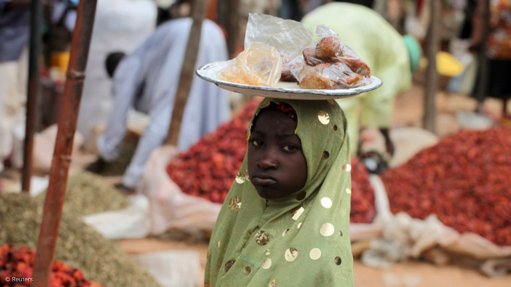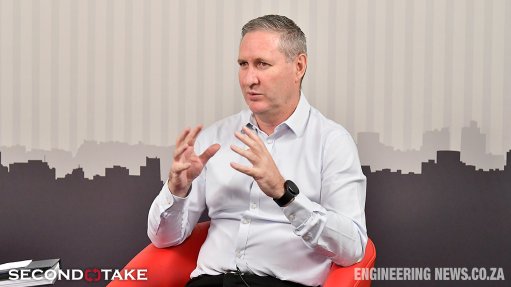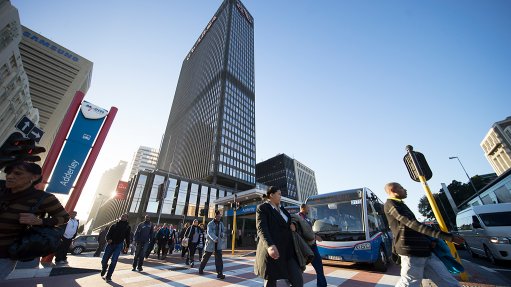Govt energy efficiency incentive programmes ‘petered out’, says Sessa
All government’s incentive programmes, aimed at encouraging energy efficiency in households, have petered out, says renewable-energy organisation the Sustainable Energy Society of Southern Africa (Sessa) water-heating division chairperson James Green.
He highlights the importance of consumer incentive programmes for the renewables industry and believes that environmental awareness and energy conservation is critical for South Africa. Green also points out that renewable energy remains more expensive in the short term than the relatively cheap coal-generated electricity currently feeding the grid.
Green adds that State-owned power utility Eskom’s stewardship of the Solar Water Heating Rebate Programme ended in January this year. Following this, the Department of Energy intended to release a new programme, but terminated these plans on April 30, thereby rendering government incentivisation of alternative energy use inactive.
Moreover, Green questions the way in which government executed the implementation of its goal, set in April 2010, to install a million solar water heaters (SWHs) in South Africa by March 2014. This date was later postponed to March 2015.
Only about 400 000 SWHs have been installed to date, with 300 000 of these having been part of the socioeconomic uplift programme known as the low-pressure solar water heater (LP SWH) rebate programme. Many of the heaters installed for this programme do not work, adds Green.
He says the LP SWH programme resulted in a boom in the solar industry in 2011 and 2012, but that the industry is now dormant because the programme was terminated at the end of December 2012.
Green attributes the dissipation of the incentive programmes and the subsequent dissipation of the industry to government’s poor administration and implementation. He adds that lax regulations on who could qualify as an installer meant that the installation standards were frequently poor and that the solar units were often set facing the wrong direction.
“In addition, the programme was not monitored by an independent auditor, which paved the way for rampant corruption.”
He notes that some installers deceived the South African Bureau of Standards (SABS) by installing systems that were different from those that had been SABS-approved, further resulting in the SWHs being frequently of poor quality.
Green adds that, following termination of the LP SWH project, the replacement project also dissipated, as Eskom had failed to conduct a tender process. The replacement project proposed the installation of 600 000 SWHs by March 2015, which has not come to fruition.
Green explains that this was largely because the Department of Trade and Industry introduced SWHs under the Preferential Procurement Policy Framework Act (PPPFA), which disqualified all South African SWH manufacturers.
Under the PPPFA, introduced in July 2013, 70% of the components that form part of a solar water heating system are meant to be locally manufactured, including the tank and the collector, at 70% each. However, all locally manufactured solar water heating systems, as of the end of 2012, used glass-evacuated tube collectors imported from China, thereby disqualifying all local manufacturers as legitimate manufacturers going forward, despite their meeting the overall local content objective.
This has contributed to the collapse of the SWH industry and the loss of about 6 000 jobs.
Meanwhile, Green also cites a separate project, launched in May 2013, which is funded by the City of Johannesburg and undertaken by Gauteng electricity supplier City Power.
The manufacturing and project management contracts for this project, which aim to deliver 115 000 SWHs to low-income homes around Johannesburg within a couple of years, were awarded to SWH manufacturers Tasol and Cleanheat.
Of the intended roll-out of 115 000 SWHs, about 65 000 have been delivered to date.
Section 12L Programme
Green tells Engineering News that he is trying to motivate the Section 12L incentive programme, launched by government in November 2013, to include in its incentive scheme the mining, hospitality and agriculture industries, as well as office buildings, to save energy.
This would mean encouraging the corporate sector, through a tax credit system, to replace their electricity use with solar thermal energy.
He adds that the 12L incentive programme initially focused on saving waste heat, but this has since been extended to lighting.
Right Idea
Green notes that providing SWHs for low-income households made sense in terms of energy efficiency, as one 100 ℓ low-pressure SWH with adequate performance could cater for the needs of a six-person household, at an average of 25 ℓ/d per person at 40 °C.
This would relieve the grid of some of the megawatt-peak burden resulting from hot plates and kettles being turned on simultaneously to provide for a family’s evening requirements for cooking and sanitation.
In addition, Green estimates that water heating across South Africa constitutes about 18% of the country’s current power consumption and about 55% of household electricity consumption. He further estimates that solar thermal solutions can save 70% to 90% of domestic heating water electricity bills, subject to the right size and performance of the SWH unit, on an ongoing basis.
Solar PV Incentives
Green states that there is currently no incentive programme for solar photovoltaic (PV) systems in South Africa, but that these systems have been quite popular in Germany and Britain, owing to incentive programmes in these countries.
However, while solar PV systems are attractive for office and light industrial environments, Green warns that, much like the solar thermal market, the solar PV market is in danger of succumbing to the same challenges, because of misselling and the inadequate experience and skills of some solar PV providers in the country.
Further, the solar PV market is currently unregulated, which leaves more space for market problems.
Green concludes that households that install solar PV systems need to do extensive research before buying, because of the significant investment.
Comments
Press Office
Announcements
What's On
Subscribe to improve your user experience...
Option 1 (equivalent of R125 a month):
Receive a weekly copy of Creamer Media's Engineering News & Mining Weekly magazine
(print copy for those in South Africa and e-magazine for those outside of South Africa)
Receive daily email newsletters
Access to full search results
Access archive of magazine back copies
Access to Projects in Progress
Access to ONE Research Report of your choice in PDF format
Option 2 (equivalent of R375 a month):
All benefits from Option 1
PLUS
Access to Creamer Media's Research Channel Africa for ALL Research Reports, in PDF format, on various industrial and mining sectors
including Electricity; Water; Energy Transition; Hydrogen; Roads, Rail and Ports; Coal; Gold; Platinum; Battery Metals; etc.
Already a subscriber?
Forgotten your password?
Receive weekly copy of Creamer Media's Engineering News & Mining Weekly magazine (print copy for those in South Africa and e-magazine for those outside of South Africa)
➕
Recieve daily email newsletters
➕
Access to full search results
➕
Access archive of magazine back copies
➕
Access to Projects in Progress
➕
Access to ONE Research Report of your choice in PDF format
RESEARCH CHANNEL AFRICA
R4500 (equivalent of R375 a month)
SUBSCRIBEAll benefits from Option 1
➕
Access to Creamer Media's Research Channel Africa for ALL Research Reports on various industrial and mining sectors, in PDF format, including on:
Electricity
➕
Water
➕
Energy Transition
➕
Hydrogen
➕
Roads, Rail and Ports
➕
Coal
➕
Gold
➕
Platinum
➕
Battery Metals
➕
etc.
Receive all benefits from Option 1 or Option 2 delivered to numerous people at your company
➕
Multiple User names and Passwords for simultaneous log-ins
➕
Intranet integration access to all in your organisation

















